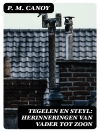In ‘The Lake Dwellings of Ireland, ‘ W. G. Wood-Martin provides a thorough examination of the prehistoric dwellings found in Ireland’s lakes and bogs, exploring their architectural significance and cultural context. Wood-Martin’s literary style is marked by meticulous research and rich descriptive language that immerses the reader in the historical landscape of Ireland. Breaking new ground in archaeological scholarship, the book contextualizes these structures within the broader framework of European lake dwellings and delves into their implications for understanding ancient Irish society, economy, and craftsmanship. W. G. Wood-Martin, an archaeologist and antiquarian, brought his extensive knowledge of Celtic history and folklore into this work, motivated by a broader desire to reconnect contemporary society with its ancient roots. His background and passion for Irish history inform his analysis, as he draws upon both historical texts and empirical research to craft a narrative that is both scholarly and accessible. Wood-Martin’s dedication to the preservation and understanding of Ireland’s archaeological heritage is evident throughout the work, illustrating the value of these ancient sites. The book is recommended for historians, archaeologists, and anyone intrigued by Ireland’s rich tapestry of ancient culture. It offers an insightful exploration of a lesser-known aspect of Ireland’s heritage, compelling readers to reflect on the significance of these ancient structures in shaping national identity and advancing historical knowledge. Immerse yourself in the captivating world of Ireland’s past and discover the importance of lake dwellings in the grand narrative of civilization.
Circa l’autore
W. G. Wood-Martin, a distinguished name in the annals of Irish archaeology, has significantly contributed to the study of prehistoric Ireland with his seminal work, ‘The Lake Dwellings of Ireland: Or Ancient Lacustrine Habitations of Erin, Commonly Called Crannogs.’ Published in 1886, this book remains an authoritative reference on its subject, reflecting the meticulous research and dedication of its author. Wood-Martin garnered respect for his scholarly approach, which combined field research with a synthesis of historical accounts and antiquarian findings. His literary style is characterized by a careful balance of detailed descriptions and analytical discussions, providing readers with comprehensive insights into the construction, use, and cultural significance of crannogs. With his work, Wood-Martin has left an indelible mark on the field, laying groundwork for subsequent scholarship in Irish archaeology and enriching our understanding of Ireland’s ancient past. Notably, his book is not merely an archaeological study; it provides a window into the broader context of Irish life in prehistoric times, contributing to a deeper appreciation of the country’s rich cultural heritage.












